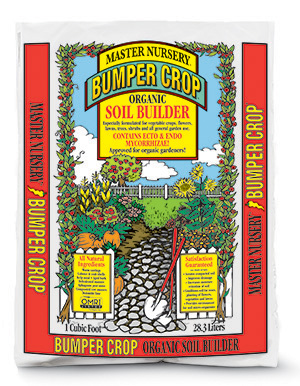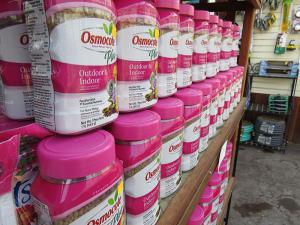

When adding plants to your landscape beds it’s important to fertilize them. We recommend Osmocote and Espoma for first-year plantings. Osmocote is a granular, time-release fertilizer that provides a balanced nutrient base for plants over the course of four to six months so your plants don’t get over or underfed. Espoma is another versatile and organic fertilizer that also lasts up to six months.
New plants need a neutral growing medium with plenty of organic matter to help the plant adapt to the soil in your yard. We recommend planting with an organic soil ammendment called Bumper Crop. It has everything you need to condition the soil and provide your plants with a great kickstart. Mixing Bumper Crop about 50/50 with the existing soil in your yard will allow plants to slowly adapt and thrive under their new growing conditions (increase Bumper Crop ratio with lower soil quality).
Using a root stimulator (see store associate for details) helps plants to get established! While a proper combination of fertilizer, Bumper Crop, and a root stimulator can do much of the work for you, effective gardening practices are just as essential to the health of your plants. Follow this step-by-step process for putting plants in the ground:
Once you complete these simple steps most of the work is over! What's left now is watering, applying a rooting stimulator (apply on a weekly basis for the first six weeks), and a seasonal application of fertilizer. Proper watering, however, can be a delicate balance to achieve. Plants will show similar signs of stress when either over or under-watered. Read our article, "Effective Watering", for more details and come to us with any questions. The progress of your plants is one of our top priorities!